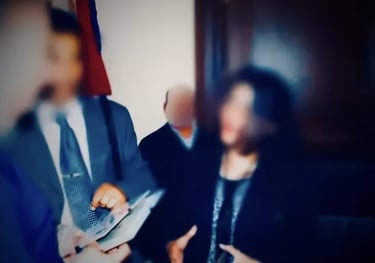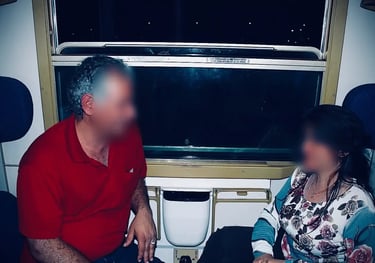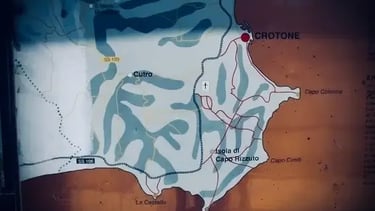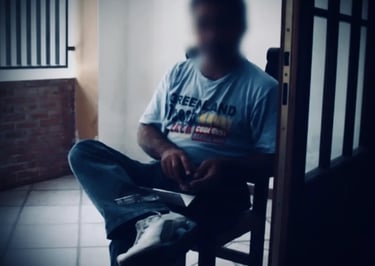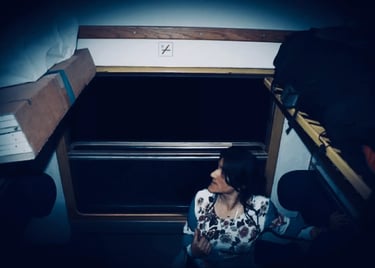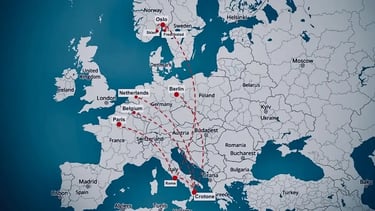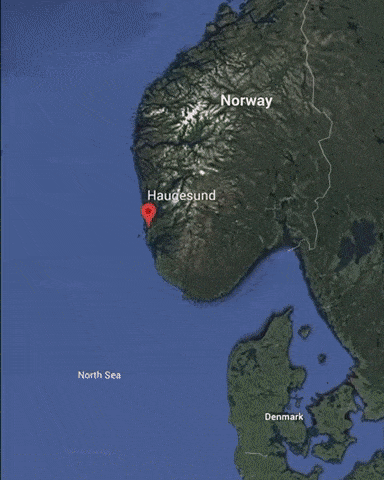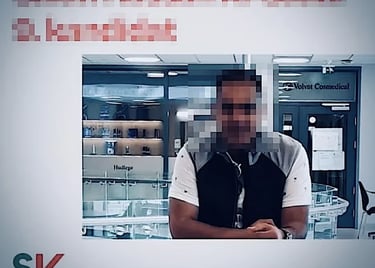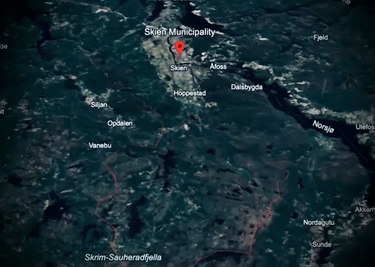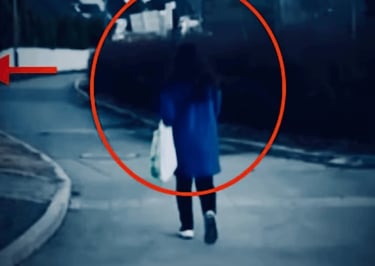Zainab Abdulkarim
Skien - Files: From Trafficking to Deception in Norway
09.09.2024
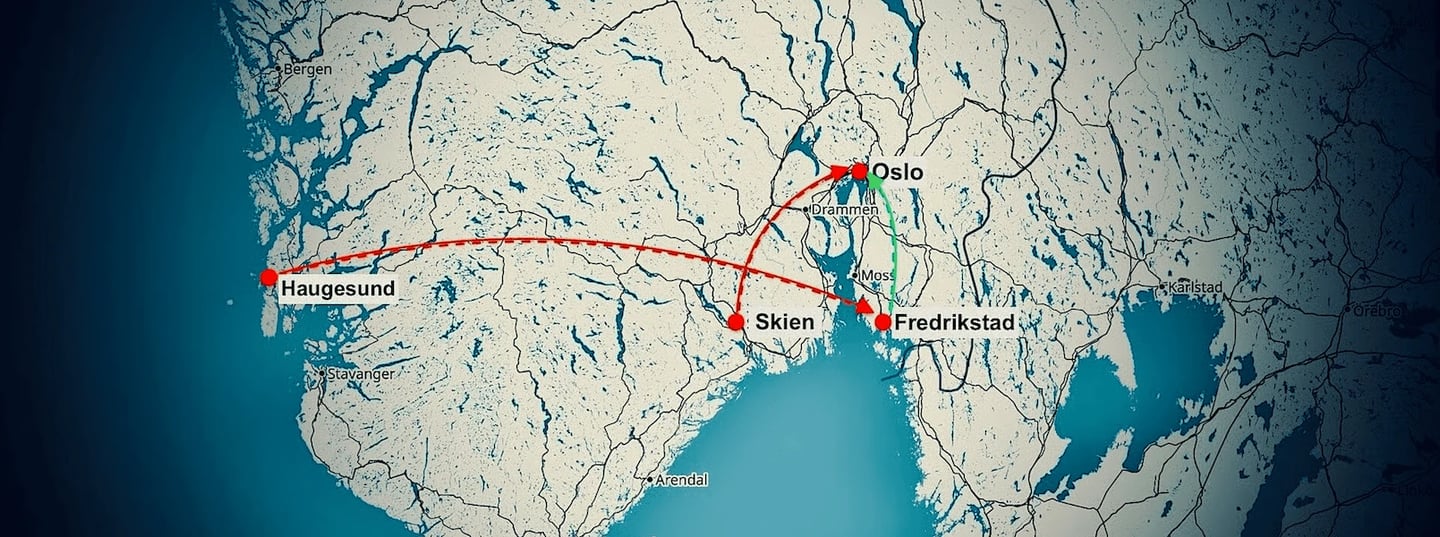

Kartet viser hvordan menneskehandlere og deres mellommenn fulgte ofrene sine på tvers av flere norske byer: 2009 – 2022


According to a 19th-century legend, “Once Upon a Time,” the Truth and the Lie met one day. The Lie said to the Truth: "It's a marvelous day today!" The Truth looked up to the skies and sighed, for the day was indeed beautiful. They spent a lot of time together, ultimately arriving beside a well. The Lie told the Truth: "The water is very nice; let's take a bath together!" The Truth, once again suspicious, tested the water and discovered that it was indeed very nice. They undressed and started bathing. Suddenly, the Lie came out of the water, put on the clothes of the Truth, and ran away. The furious Truth came out of the well and ran everywhere to find the Lie and to get her clothes back. The World, seeing the Truth naked, turned its gaze away in contempt and rage.The poor Truth returned to the well and disappeared forever, hiding therein in its shame. Since then, the Lie travels around the world, dressed as the Truth, satisfying the needs of society, because the World, in any case, harbors no wish at all to meet the naked Truth.
The world-famous painting "The Truth Coming Out of the Well" by artist Jean-Léon Gérôme, 1896, is exhibited at the Anne de Beaujeu Museum in Moulins, Allier. This painting embodies the famous legend that represents the struggle between truth and lies, depicting Truth as she emerges naked from the well after Lie has stolen her clothes. This image embodies the artist's philosophy of how society perceives truth, where the naked truth is often rejected, while the Lie wanders around disguised in her clothes.
With that painful allegory begins the real story of one of the most remarkable acts of deception in modern Europe the story of “Smuggling coordinator” who became a “political refugee” in Norway after once coordinating an organized network of smuggling artists and migrants across Europe under the pretense of humanitarian and cultural projects.
After coordinating the smuggling of dozens of migrants to countries such as Germany, Belgium, the Netherlands, and Norway, the smuggling coordinator eventually decided to smuggle herself using the same route and the same accomplice, the man who had previously helped move these individuals. Together, they traveled by car from Rome to Norway, a three-day journey across Europe. She arrived in Norway in the autumn of 2008, having ensured that all the individuals she had coordinated for, including the guard who had previously monitored the arrested migrants in the Italian city of Crotone, had already been safely transported.
What made this journey remarkable was not only the audacity of the act but the astonishing ability to deceive.
The smuggling coordinator managed to deceive the Norwegian Directorate of Immigration (UDI) using her acting skills, pretending to suffer from selective mutism and psychological trauma, complete with tears and dramatic storytelling, as documented in her interview with UDI 2008. She claimed to be a famous Iraqi artist whose life was in danger due to “political persecution,” and as a result, she was officially granted political asylum in Norway.
Her story did not end there. She went on to manipulate Norway’s deep sense of humanitarian compassion, launching a campaign of calculated lies and staged victimhood. Using fabricated illnesses and emotional appeals, she gained social benefits, legal protection, and sympathetic media coverage.
Local newspapers notably Varden.no became the first to fall for her deception. The paper published a series of stories glorifying her as a “persecuted artist who escaped violence and death,” crafting a perfect tale of refugee suffering and courage. The truth, however, was far different.
According to later findings, the interview published by Varden in 2013, later removed from their website was full of false information about her background, origin, and reasons for asylum.
While she claimed to have fled death threats after working in Iraq’s Ministry of Culture, she was in fact part of a smuggling network that disguised its operations as “humanitarian art exhibitions” managed from abroad. The so called “ Charity Exhibitions” she cited was merely a cover; the actual coordination took place in Crotone, Italy.
In her interview, recounted a terrifyingly dramatic stories full of assassination attempts, a missing driver, mysterious phone threats, and imminent danger to her life appearing suddenly without warning, all meticulously crafted to build her legend as the “heroic refugee.” Her story became a powerful media tool and an emotionally charged narrative, concealing behind it a complex network of legal manipulation and exploitation of loopholes in Europe’s asylum systems.
Once granted permanent residence and political asylum in Norway, she used her image as a “refugee artist” to establish influential connections in the art community, benefiting from public sympathy and support from local municipalities and cultural institutions that never verified her true past.
Over time, however, contradictions began to emerge among her various stories, especially after witnesses and documents surfaced revealing how artists and migrants were moved from Italy to northern Europe through so-called “cultural projects.”
After some of these details appeared in limited reports in 2024, the same newspaper that had once promoted her stories quietly deleted the original article at her request, likely to avoid renewed scrutiny and comparison between her old claims and the new evidence.
Today, the case resurfaces not merely as a tale of human deceit but as a deeper question about how far humanitarian institutions and the media are willing to go without verifying the stories told under the banner of “suffering” and “humanity” stories that may, in fact, be just another disguise worn by Lie as she continues to walk among us dressed as Truth.


This individual presented herself to the Norwegian Directorate of Immigration in 2008, and later to the Norwegian media, as a well-known Iraqi artist fleeing the horrors of assassinations, sexual violence, and death threats. She claimed to have arrived in Norway directly from Iraq, ignoring the fact that her journey had actually passed illegally through Italy and France. She also asserted that she held a senior position in the Iraqi Ministry of Culture and that armed gangs disguised as police, driving police cars and motorcycles, were chasing her through the streets of Baghdad.
To journalists, she presented a dramatic story of unimaginable suffering, including losing her ability to speak for several days due to shock after an alleged assassination attempt, as well as other claims involving kidnapping attempts and secret rescue operations said to have involved American forces.
However, later evidence painted a completely different picture. It was revealed that much of her story was based on carefully constructed fabrications, and that she was, in fact, the main coordinator of a human trafficking network. She managed complex smuggling operations carried out under the cover of a fake charitable art project, using humanitarian and cultural slogans to conceal her real activities. These operations were conducted through France and Italy before she herself entered Norway illegally.
Subsequent investigations uncovered major inconsistencies in her statements about the alleged gangs, mysterious contacts, and fabricated assassination attempts she used to justify her asylum request. Her stories were later described as an example of deliberate psychological and emotional manipulation aimed at eliciting sympathy and securing legal and media protection.
The original article published by the Norwegian newspaper Varden.no in 2013 was removed in 2024, after subsequent investigations uncovered substantial evidence contradicting the claims made in the original interview.
The evidence indicated coordinated smuggling operations in 2008, conducted under the guise of a fake art project, which facilitated the illegal entry of individuals into Schengen countries.
The newspaper decided to delete the article following these findings.
Source:
Varden – December 7, 2013 (Article removed in 2024)
https://www.pressreader.com/norway/varden/20131207/282570195910798


The map illustrates how several traffickers and their intermediaries monitored the movements of an individual who had previously been smuggled across multiple Norwegian cities over the years.
One of the participants involved in organizing the 2008 smuggling operation to Gardermoen moved from Tysvær–Haugesund in western Norway to Fredrikstad after learning that the individual had settled there in 2009. Meanwhile, the main coordinator of the network relocated from Skien to Oslo after discovering that the same person had moved from Fredrikstad to Oslo in 2014, fleeing the group that had originally transported him from Rome to Norway.
The arrows on the map indicate a systematic and long-term tracking pattern, reflecting a well-organized network that closely monitored the individual’s location and movements over time.
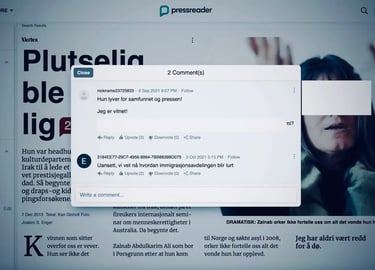

Interpol, Europol, UNODC, IOM, Frontex, Human trafficking, U.S. Department of State, ,Ministry of Justice and Public Security Migrant smuggling, Fraudulent networks, Cross-border fraud, Varden.no, Exploitation under art projects, Photoshop deception, Schengen countries, Italy, Rome, Crotone, Norway, Oslo lufthavn Gardermoen (OSL), Fredrikstad, Skien, Oslo.
𖡡 Documented event in Skien, Norway, 2008 - 2014

